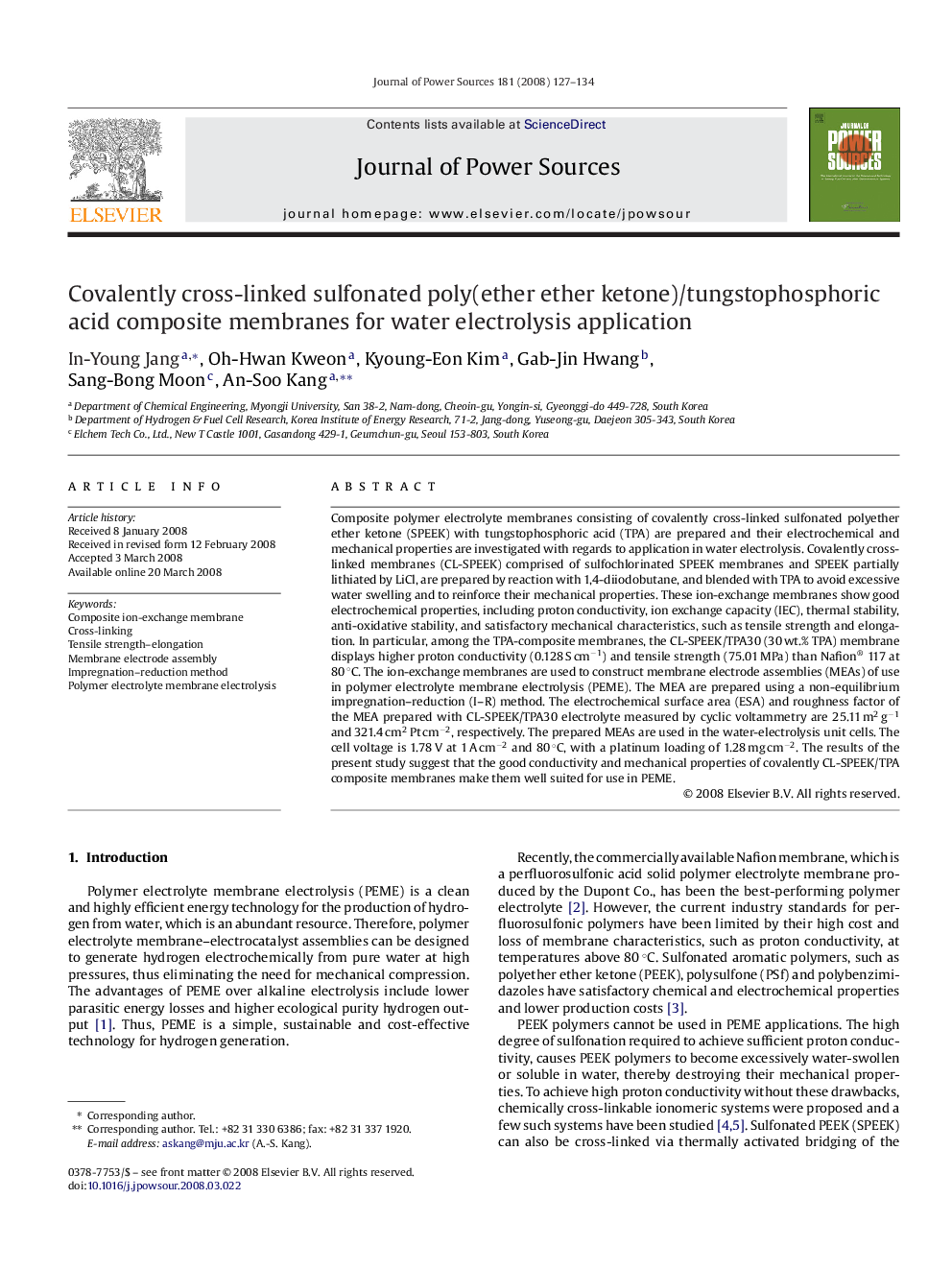| Article ID | Journal | Published Year | Pages | File Type |
|---|---|---|---|---|
| 1285490 | Journal of Power Sources | 2008 | 8 Pages |
Composite polymer electrolyte membranes consisting of covalently cross-linked sulfonated polyether ether ketone (SPEEK) with tungstophosphoric acid (TPA) are prepared and their electrochemical and mechanical properties are investigated with regards to application in water electrolysis. Covalently cross-linked membranes (CL-SPEEK) comprised of sulfochlorinated SPEEK membranes and SPEEK partially lithiated by LiCl, are prepared by reaction with 1,4-diiodobutane, and blended with TPA to avoid excessive water swelling and to reinforce their mechanical properties. These ion-exchange membranes show good electrochemical properties, including proton conductivity, ion exchange capacity (IEC), thermal stability, anti-oxidative stability, and satisfactory mechanical characteristics, such as tensile strength and elongation. In particular, among the TPA-composite membranes, the CL-SPEEK/TPA30 (30 wt.% TPA) membrane displays higher proton conductivity (0.128 S cm−1) and tensile strength (75.01 MPa) than Nafion® 117 at 80 °C. The ion-exchange membranes are used to construct membrane electrode assemblies (MEAs) of use in polymer electrolyte membrane electrolysis (PEME). The MEA are prepared using a non-equilibrium impregnation–reduction (I–R) method. The electrochemical surface area (ESA) and roughness factor of the MEA prepared with CL-SPEEK/TPA30 electrolyte measured by cyclic voltammetry are 25.11 m2 g−1 and 321.4 cm2 Pt cm−2, respectively. The prepared MEAs are used in the water-electrolysis unit cells. The cell voltage is 1.78 V at 1 A cm−2 and 80 °C, with a platinum loading of 1.28 mg cm−2. The results of the present study suggest that the good conductivity and mechanical properties of covalently CL-SPEEK/TPA composite membranes make them well suited for use in PEME.
